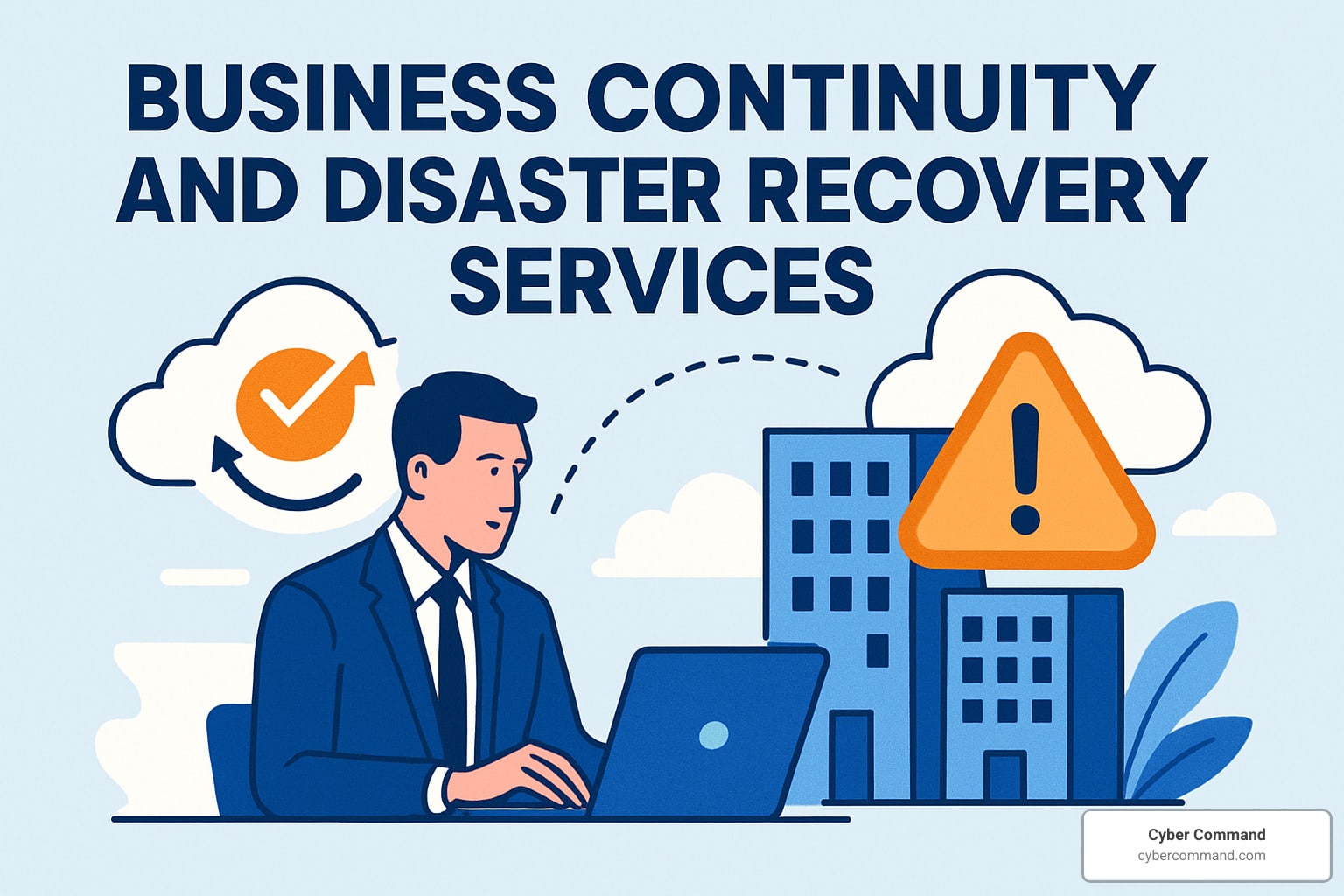Most modern businesses rely on the expertise of IT specialists that manage the various technological aspects of the business, from the basic network used for business communications to software that customers may use to access products. Regardless of the breadth of an IT department, there may come a time when a co-managed IT solution may be necessary for a business to flourish.
Essentially, co-managed IT is a service that allows a business to integrate a managed service provider for additional IT support into an internal IT department. The ability to collaborate with different IT management allows for a more customized and flexible approach to IT projects and issues. For the most part, any business large or small can use a co-managed service. That said, organizations that are interested in growth may benefit the most.
What Are the Benefits of Co-Managed IT?
There are several significant benefits of using co-managed services to fortify IT structure. For example, the ability to collaborate allows for easier troubleshooting of any problems that may come up, helps an internal IT department close gaps in security, and can allow management to focus more on building the business.
As an outsourcing strategy, it’s important to use co-managed services strategically for the benefit of the business, which is why it’s necessary to be aware of all the ways this type of service can help support an organization. Some of the most significant benefits include:
1. Client-Centric
First and foremost, co-managed IT services are tailored to the client, which means that the needs of the business are prioritized. The software, security protocols, and other IT techniques that will be used to aid in an organization’s IT management will all be customized to the current IT needs and overall goals of an organization.
By taking a client-centric approach, co-manage services are able to maintain flexibility and responsiveness that will help businesses grow. Furthermore, the ability to collaborate with a co-managed team can create a new IT structure that will push a business forward into the future.
2. Transparent Network
Another benefit of a co-managed service is increased network transparency. Although internal IT managers will generally know what is going on within the network at all times, limited staff resources and technology that isn’t up-to-date may not allow for the best transparency in the network. With increased network transparency, it’s much easier to monitor all devices that interact with the network and counter potential security risks.
3. Cost Management
Cost management is another significant factor that makes co-managed IT services especially attractive. The ability to mix and match types of IT services will enable management to create a plan that is within the budget of the business, but also provides all the services that the business needs.
For that matter, a co-managed service is much more affordable than a fully managed service. This is because a co-managed service will utilize the staff and infrastructure a business is already using, while a fully managed service will completely take over all the organization’s IT needs and will cost more in the long run.
4. Total Coverage for IT Services
The scale and scope of IT services relate to many devices, software, and other technology solutions that may be involved in the day-to-day management of a business. Because IT services can manage issues from network security to internet access to data breaches, it’s important to use a co-managed service that provides total coverage for any blank spots the current IT team may have.
Total coverage for IT services will begin with a network assessment to understand security needs, as well as an assessment of other potential IT issues the organization has. The co-managed service will then identify areas in the current IT infrastructure that need additional support and will create a plan that will allow for total coverage.
5. Maintain Current Employees
Particularly for small businesses, it can be very important to maintain good employee-employer relationships, so it’s especially beneficial that a co-managed service will allow businesses to maintain current IT employees. It’s always a good idea to keep the current in-house IT staff because they already have a working knowledge of the network and IT infrastructure.
Additionally, the co-managed service is usually able to provide support off-site or remotely, which means the business will likely still need to have in-house support for day-to-day IT needs. Keeping the current IT staff allows businesses to have the best of both worlds.
6. Escalation Point for IT
Co-managed services also provide an escalation point for any IT needs the business may have. For example, if the organization runs into an issue like a network security problem or the inability to access email, if the in-house IT staff can’t resolve this issue, then they have a support team ready to help them remotely through the co-manage service.
The ability for an internal IT team to reach out for support when necessary means that the organization benefits from a safety net that will ensure the productivity of the business and reduce downtime the network may experience. The escalation point is also helpful because the co-managed service may have staff that have expertise in IT knowledge that the in-house staff doesn’t have, which ensures that an organization’s IT support is well-rounded.
7. Stronger Security
Network security benefits when more eyes can detect potential issues. Hand in hand with network transparency, it’s very important to ensure an organization’s network has the strongest security possible.
In the age of cybercrime, small and large organizations have to fend off security risks daily to prevent issues such as data breaches. By having an integrated co-managed service, a business can fortify the current network security it has and adopt protocols that will prevent security issues in the future.
8. Faster Response
Another important benefit of a co managed IT service is the ability to have a faster response time, particularly during times when in-house IT are unable to resolve IT issues. It’s very important to have a fast response time for IT issues, because the faster response is, the faster a business can resume normal activity or prevent security breaches.
9. Data Compliance Support
These days, there is an ongoing evolution in data compliance laws and regulations that businesses need to continually maintain to avoid penalties and other legal consequences. Because data compliance needs to be maintained constantly, it can be a challenge for in-house IT staff to monitor all data compliance regulations at all times.
However, with a co-managed service, an organization will benefit from the ability to immediately respond to any data compliance breaches or new aspects of data compliance regulations. By maintaining data compliance regulations, a business will be fully supported in terms of legal requirements.
10. Proactive Monitoring
In cybersecurity, it’s ideal if an organization’s attitude towards security risks is proactive rather than responsive. This means that IT infrastructure and protocol is designed to prevent cyber risks rather than respond to cyber risks after they have happened. Part of having proactive monitoring is the ability to create an IT plan for the security of the network that covers all potential risk factors and entry points.
With proactive monitoring, not only will an organization’s response to any potential data breaches be much faster, but the organization may be able to prevent those breaches from happening in the first place. A co-managed service working with in-house IT staff can make proactive monitoring much easier.
11. 24-Hour Response Time
Finally, using a co-managed service for IT needs also enables an organization to have a 24-hour response time. Businesses that are interested in growing or that continually use IT resources even during off-hours will benefit from a 24-hour response time that can be found with a co-managed service.
This is one of the greatest benefits of using a co-managed IT service. By partnering with a service that provides 24-hour monitoring of the network and can respond to any IT needs immediately, a business benefits by having more protection and overall faster response that will help the business move forward.
How Can You Implement Co-Managed IT?
Implementing co-managed IT services is much easier than business owners and organizations may first assume. The easiest way to implement a co-managed service is to first schedule a technology strategy session and a network security assessment that will analyze IT infrastructure to identify any weak points an organization may have.
From there, the co-managed service will work with in-house IT staff to create new strategies and protocols that can be integrated into the current structure. The co-managed service will then be on-boarded into the organization and the business will benefit from a trusted one-stop-shop for any IT solutions and services it may need.
Regardless of the size of a business, a co-managed service for IT needs can be beneficial, particularly for growing businesses and organizations. A co-managed service is important to maintain a fast response time, network security, proactive monitoring, data compliance support, and an escalation point for current IT staff. To learn more about integrating co-managed IT services into business operations, contact Cyber Command today.
Nonprofit IT Services Without the Headache
Streamline your mission with nonprofit it services. Discover solutions, best practices, and funding tips for smarter nonprofit tech.
Accountant’s Guide to Cloud Storage: Keep Your Data Safe
Discover how cloud storage for accountants boosts security, compliance, and productivity for modern accounting firms.
Continue Reading Accountant’s Guide to Cloud Storage: Keep Your Data Safe
From Chaos to Calm: Continuity and Recovery Explained
Discover how business continuity and disaster recovery services protect your operations, data, and reputation from costly disruptions.
Continue Reading From Chaos to Calm: Continuity and Recovery Explained








